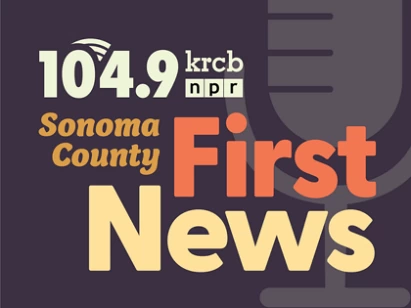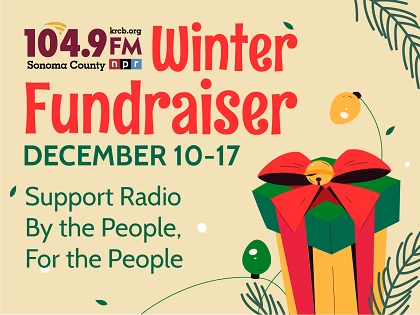 photo credit: Noah Abrams/KRCB
photo credit: Noah Abrams/KRCBView of forests from Coleman Valley Road
outside Occidental, CA.
Peer into the dense understory in parts of West Sonoma County and it’s easy to think the packed forest is healthy, but mending and tending our wild spaces sometimes means seeing them differently.
"What is a forest and it's, and it's a relationship," Brock Dolman said at a recent talk for Fire Safe Sonoma.
Dolman is co-founder and restoration biologist at the Occidental Arts & Ecology Center.
"Our mantra here has really been fewer trees and more forest," Dolman said.
Thinning out crowded under stories is an important part of the process for Dolman. He said the byproduct, commonly called slash, shouldn't be feared.
"Slash has a derogatory sense," Dolman said. "It feels like it's a waste, something to be gotten rid of. It's, it's slash is often thought of as trash. And we really wanna re-frame that. That slash isn't actually trash. It's a beneficial biomass."
Dolman noted slash biomass can be recycled within the landscape, whether as wood chip fertilizer or as packing to shore up loose soils and seasonal streams endangered by erosion.
Dolman said reconnecting the carbon stored within organic slash with the soil is necessary.
"Sustainability is about our ability to sustain the cycles of life," Dolman said. "And all life as we know it on this planet is carbon based and mostly water; and so how do we connect the water carbon cycle."
Recycling slash can also help water move through the forest in a healthy way, Dolman said.
"Limbing and thinning, and then we're hand placing that organic matter, the, the limbs of the dug fur or the excess tan oak or bay," Dolman said. "And what we're really trying to do is reclaim our waterways, our channels, reduce the delivery of sediment downstream."
Dolman also said finding the right balance between thinning forest under story, sequestering organic carbon material on the land, and ensuring adequate water flow is critical to returning our forests to a healthy state.

 Live Radio
Live Radio




